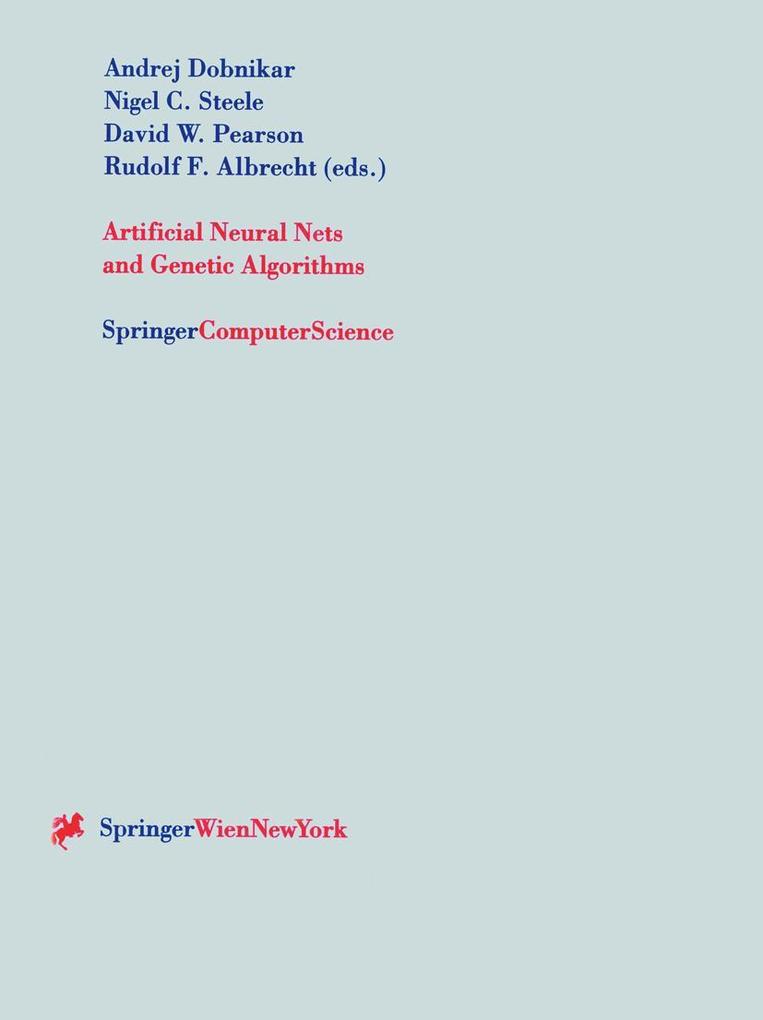
Zustellung: Do, 10.07. - Sa, 12.07.
Versand in 2 Tagen
VersandkostenfreiBestellen & in Filiale abholen:
From the contents:Neural networks - theory and applications: NNs (= neural networks) classifier on continuous data domains- quantum associative memory - a new class of neuron-like discrete filters to image processing - modular NNs for improving generalisation properties - presynaptic inhibition modelling for image processing application - NN recognition system for a curvature primal sketch - NN based nonlinear temporal-spatial noise rejection system - relaxation rate for improving Hopfield network - Oja's NN and influence of the learning gain on its dynamics Genetic algorithms - theory and applications: transposition: a biological-inspired mechanism to use with GAs (= genetic algorithms) - GA for decision tree induction - optimising decision classifications using GAs - scheduling tasks with intertask communication onto multiprocessors by GAs - design of robust networks with GA - effect of degenerate coding on GAs - multiple traffic signal control using a GA - evolving musical harmonisation - niched-penalty approach for constraint handling in GAs - GA with dynamic population size - GA with dynamic niche clustering for multimodal function optimisationSoft computing and uncertainty: self-adaptation of evolutionary constructed decision trees by information spreading - evolutionary programming of near optimal NNs
Inhaltsverzeichnis
Plenary talks. - Topological Approach to Fuzzy Sets and Fuzzy Logic. - Linking Human Neural Processes Directly with Technology the Future? . - Neural Dynamic Model for Optimization of Complex Systems. - I: Neural Networks Theory and Applications. - Comparative Testing of Hyper-Planar Classifiers on Continuous Data Domains. - A Quantum Associative Memory Based on Grover s Algorithm. - Newton Filters: a New Class of Neuron-Like Discrete Filters and an Application to Image Processing. - Improving Generalisation Using Modular Neural Networks. - The Role and Modelling of Presynaptic Inhibition in the Visual Pathway: Applications in Image Processing. - A Curvature Primal Sketch Neural Network Recognition System. - Using GMDH Neural Net and Neural Net with Switching Units to Find Rare Particles. - A Neural Network Based Nonlinear Temporal-Spatial Noise Rejection System. - Improving the Performance of the Hopfield Network by Using a Relaxation Rate. - A New Activation Function in the Hopfield Network for Solving Optimization Problems. - On-line Learning of Object Representations. - A Neural Network Model for Blast Furnace Wall Temperature Pattern Classification. - Monitoring an Industrial Plastic Injection Moulding Machine Using Neural Networks. - Rates of Learning in Gradient and Genetic Training of Recurrent Neural Networks. - Influence of the Learning Gain on the Dynamics of Oja s Neural Network. - ATR s Artificial Brain Project: CAM-Brain Machine (CBM) and Robot Kitten (Robokoneko) Issues. - A Speaker-Independent Arabic Isolated-Spoken Digits Recognition System Using Fuzzy Kohonen Clustering Network. - Control of Complex of Parallel Operations Using Neural Network. - Using Smoothing Splines in Time Series Prediction with Neural Networks. - Evolvable Hardware Chips for Neural NetworkApplications. - Direct Inverse Control of Sensors by Neural Networks for Static/Low Frequency Applications. - Centre and Variance Selection for Gaussian Radial Basis Function Artificial Neural Networks. - Minimum Square-Error Modeling of the Probability Density Function. - Adaptation of NN Complexity to Empirical Information. - The RBF Neural Network in Approximate Dynamic Programming. - Adaptive Modularity and Time-Series Prediction. - Some Comparisons between Linear Approximation and Approximation by Neural Networks. - II: Genetic Algorithms Theory and Applications. - Transposition: a Biological-Inspired Mechanism to Use with Genetic Algorithms. - Genetic Algorithms for Decision Tree Induction. - Optimising Decision Classifications Using Genetic Algorithms. - Scheduling Tasks with Nonnegligible Intertask Communication onto Multiprocessors by Using Genetic Algorithms. - Design of Robust Networks of Specific Topologies Using a Genetic Algorithm. - The Effect of Degenerate Coding on Genetic Algorithms. - Genetic Algorithms for the Identification of the Generalised Erlang Laws Parameters Used in Systems Dependability Studies. - Multiple Traffic Signal Control Using a Genetic Algorithm. - Evolving Musical Harmonisation. - A Niched-Penalty Approach for Constraint Handling in Genetic Algorithms. - A Genetic Algorithm with Dynamic Population Size. - A Genetic Algorithm with Dynamic Niche Clustering for Multimodal Function Optimisation. - Time and Size Limited Harvesting Models of Genetic Algorithm. - A General Model of Co-evolution for Genetic Algorithms. - Selection of Informative Inputs Using Genetic Algorithms. - III: Soft Computing and Uncertainty. - Parallel Evolutionary Algorithms with SOM-Like Migration and Their Application to Real-World Data Sets. - Skewed Crossover and the DynamicDistributed Database Problem. - Improved Pseudo-Relaxation Learning Algorithm for Robust Bidirectional Associative Memory. - Self-Adaptation of Evolutionary Constructed Decision Trees by Information Spreading. - Evolutionary Programming of Near-Optimal Neural Networks. - Exploring the Relationship Between Neural Network Topology and Optimal Training Set by Means of Genetic Algorithms. - Development of Fuzzy Learning Vector Quantization Neural Network for Artiflcal Odor Discrimination System. - Differential Inclusions Mapping Simplexes to Simplexes. - Crossbar Adaptive Array: The First Connectionist Network That Solved the Delayed Reinforcement Learning Problem. - An Evolutionary Algorithm for a Non-standard Scheduling Problem. - An Evolutionary Approach to Concept Learning with Structured Data. - Genetic Redundancy: Desirable or Problematic for Evolutionary Adaptation? . - Dynamic Systems Modelling with Evolving Cellular Automata.
Produktdetails
Erscheinungsdatum
15. Juli 1999
Sprache
englisch, deutsch, französisch, spanisch
Auflage
Softcover reprint of the original 1st edition 1999
Seitenanzahl
372
Herausgegeben von
Rudolf F. Albrecht, Andrej Dobnikar, David W. Pearson, Nigel C. Steele
Verlag/Hersteller
Produktart
kartoniert
Abbildungen
X, 352 p. 70 illus.
Gewicht
909 g
Größe (L/B/H)
280/210/21 mm
ISBN
9783211833643
Entdecken Sie mehr
Bewertungen
0 Bewertungen
Es wurden noch keine Bewertungen abgegeben. Schreiben Sie die erste Bewertung zu "Artificial Neural Nets and Genetic Algorithms" und helfen Sie damit anderen bei der Kaufentscheidung.










